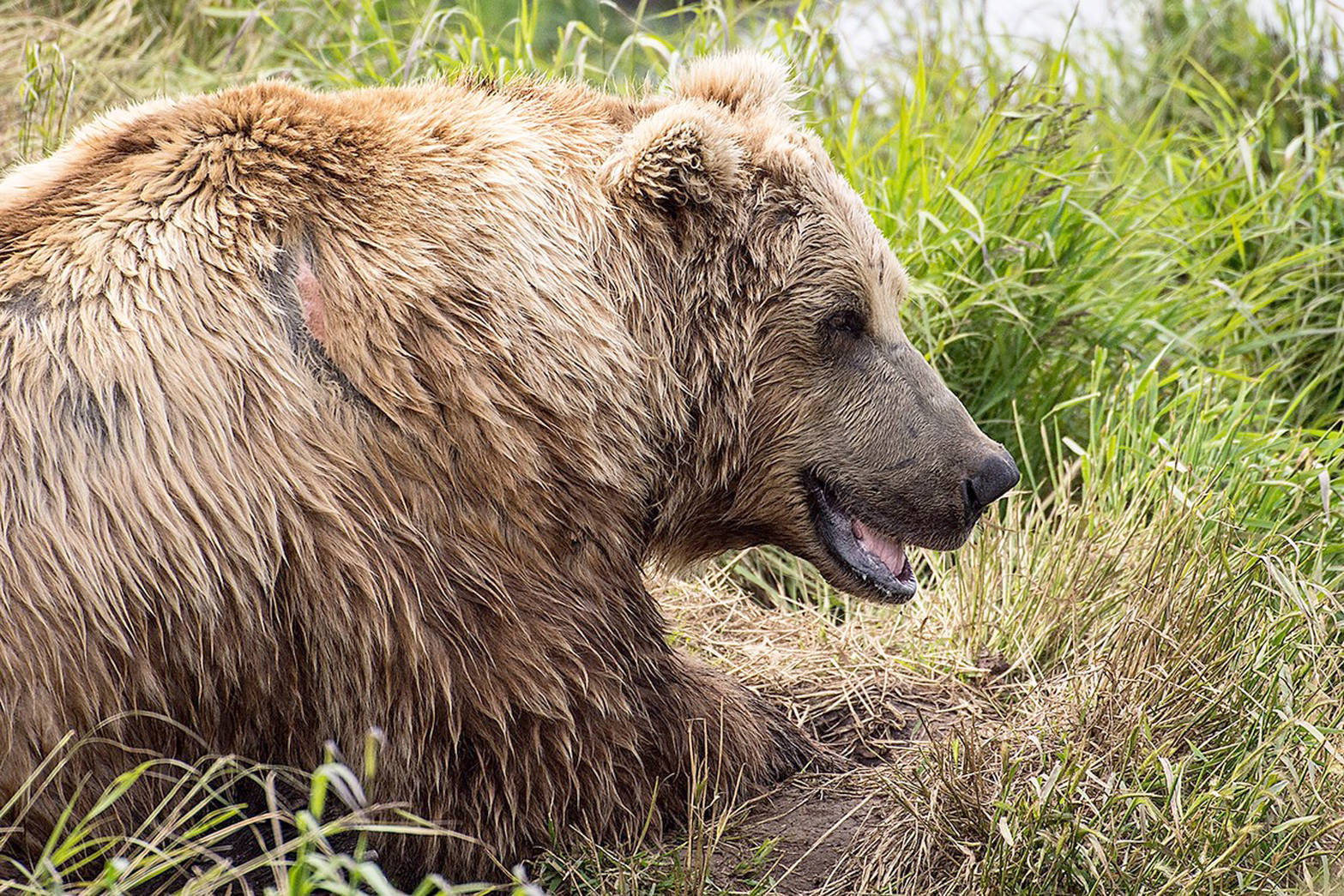Winning an Alaska lottery is the ultimate experience of a lifetime. Although it may not be a lottery with a big cash payout, it does offer an incomparable wholesome experience into a bear’s world for a few days. Applicants of this “lottery” may become lucky enough to win a trip to McNeil River State Game Sanctuary and Refuge. I was fortunate to indulge in this unbelievable experience for four days during peak bear viewing season in July.
McNeil State Game Sanctuary is a remote location oxn the western shore of Cook Inlet, an hour flight west of Homer. The rich ecosystem of the McNeil area makes for the largest concentration of brown bears, unparalleled in the world. According the Alaska Department of Fish and Game, the McNeil River area was designated as a wildlife sanctuary to ensure protection of this unique resource of wild brown bears.
Throughout my time at McNeil River, I was profoundly taken by the magnificence of this place and the diversity of untouched nature that is observable even from camp. During low tides, mostly family groups and subadult bears can be seen clamming or grazing on the nutritious sedge grasses. Observing cubs frolicking and rolling around made for great entertainment from the edge of camp. Occasionally, the neighborhood red fox trots by with its latest victim, heading toward its den near camp, where fox kits can sometimes be seen playing. Although McNeil River is specifically known for bear viewing, it’s such a great opportunity to appreciate other wildlife as well.
Not more than a two-mile walk from camp takes you to the McNeil River Falls. As many as 10 permit holders accompanied by ADF&G staff go out on bear viewing trips each day. While out on these trips bears can come very close at any time. The 50-year success of this program is due to the careful efforts to maintain a neutral experience between bears and humans. By following the lead of our guides and keeping our party close together, the group is perceived as a single, large entity by approaching bears. By practicing careful and unaggressive movements, the bears respect our space as we do theirs.
The viewing area at the falls offers no barrier between the bears and humans, truly making this a paramount experience. This is where the larger boars can be observed. There is something truly special about having multiple bears easily over 1,000 pounds walk within several feet of the gravel pad we stand on, not feeling the least bit afraid due to the known history of bear management in this very special area. It is captivating when a bear shreds a salmon apart within several feet of us. Even enthusiastic camera-phone users can get quality pictures due to countless close encounters with the bears here.
The highest count of brown bears at any one time during our visits to McNeil Falls was 56! A majority of the bears that roam the area are identified by nicknames that help our guides keep track of who’s who. Their names reflect a unique combination of gender, size, color, specific scars, behaviors and distinctive qualities.
It is very interesting to watch the various ways that bears use to get ahold of a fish—from snorkeling, plunging and diving, to standing still in the water waiting for fish to swim up the falls. Some bears specialize in one or two techniques, while only a select few have been noted for having success with all the fishing methods.
Bear-on-bear interactions are also remarkable to watch. Some plead for fish from other bears, while others compete for them. It’s hard to believe that nearly 30 hours of watching bears during my trip never got old. Even for a born and raised Alaskan, this place was unbelievably fascinating for me.
I have seized what I’ve learned from this wonderful experience, using these lessons to help educate the public about bears while working at Kenai National Wildlife Refuge. Of course, due to inevitable human habituation, bears that roam the refuge are not comparable to the bears at McNeil State Game Sanctuary.
Most bears on the refuge have likely been negatively or positively affected by human activities in some capacity, therefore there is an increased potential for risk and negative encounters with human-habituated bears. Bears are smart animals and it is imperative to take the necessary steps to help keep them as “wild” as possible. Practicing proper stewardship of the land (and your property) alleviates the potential for bears to become human habituated and decreases the number of human-bear conflicts. What could you do to help keep our bears wild?
Hydn McDermott-Johnston is a seasonal Park Ranger for the Kenai National Wildlife Refuge and a lifelong Soldotna resident. Information about McNeil State Game Sanctuary and Refuge is found at www.adfg.alaska.gov. Find more information about Kenai Refuge athttp://www.fws.gov/refuge/kenai/ or http://www.facebook.com/kenainationalwildliferefuge.

